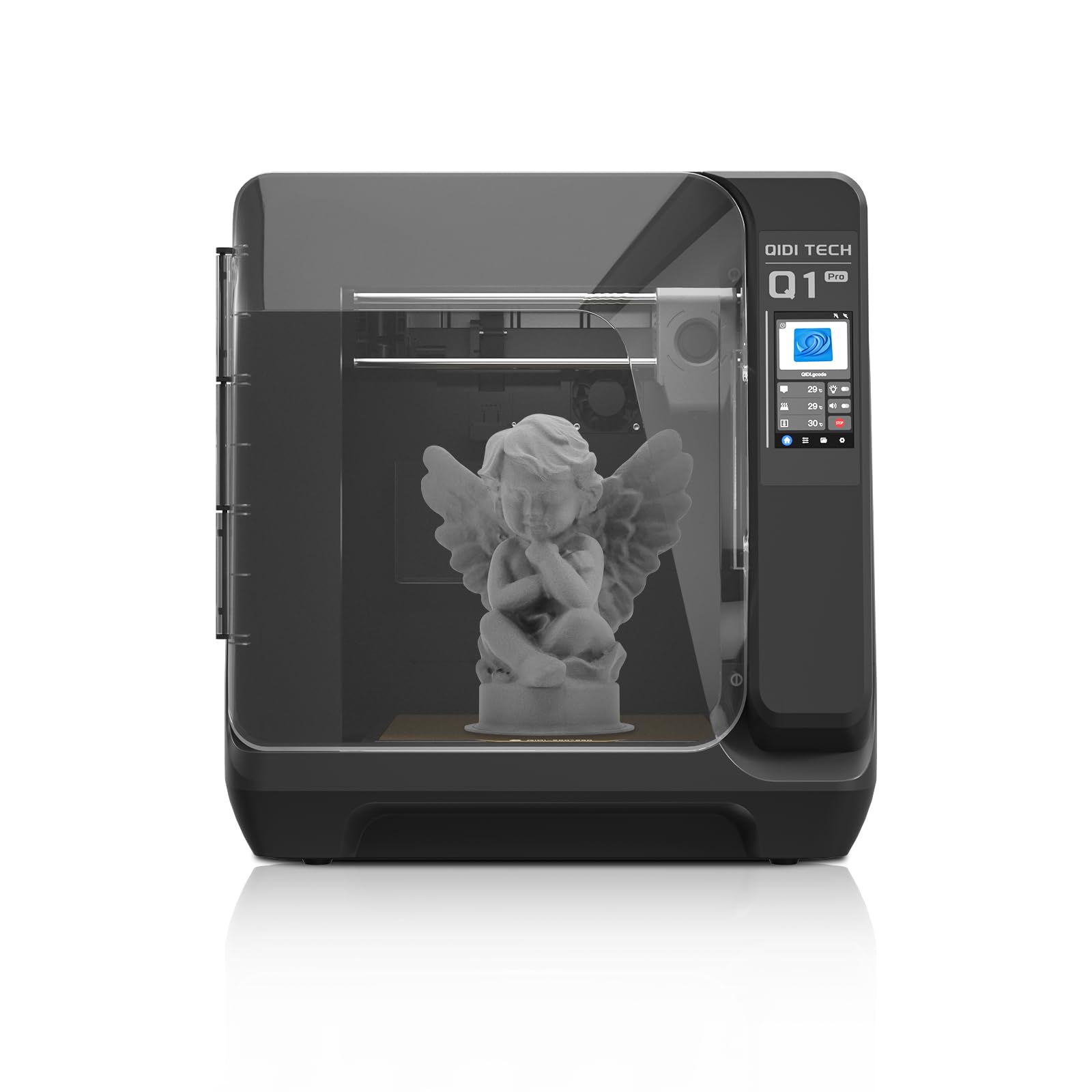Compare Q1 PRO vs CR 10 Smart Pro
Comparison between the best 3D printers
Choose the best 3D printer at the best price. The cheapest 3D printers are here.
Buy a 3D printer here with 3D Fila.
 |
 |
|
| Model | Q1 PRO[BUY Q1 PRO] |
CR 10 Smart Pro[BUY CR 10 Smart Pro] |
| Printing Material | Filament | Filament |
| Buy Filament for QIDI Q1 PRO | Buy Filament forCreality 3D CR 10 Smart Pro | |
| Estimated price | $449,00 | $900,00 |
| Manufacturer | QIDI | Creality 3D |
| Release Year | 2024 | 2020 |
| Print Volume [mm] | 245x245x245 | 300x300x400 |
| Printer Size [mm] | 467x477x489 | 578x522x648 |
| Weight [kg] | 20 | 13,6 |
| Power Loss Recovery | YES | YES |
| Enclosed printer | YES | NO |
| Bed Leveling | Automatic | Manual |
| Filament End Sensor | YES | YES |
| Bed type | Heated | Heated |
| Power supply system | Direct Drive | Bowden |
| Standard nozzle | 0,4 | 0,4 |
| Maximum Nozzle Temperature [°C] | 350 | 300 |
| Maximum Bed Temperature [°C] | 120 | 100 |
| Maximum printing speed [mm/s] | 600 | 50 |
| Filament holder | YES | YES |
| Camera for supervision | YES | YES |
| Recommended filaments | PLA、ABS、ASA、PETG、TPU、PC、PA、PA-CF、PET-CF、PAHT-CF etc. | PLA, PETG, Tritan, Flex, ABS |
| Recommended slicers | QIDI Slicer/Cura/Simplify 3D/ORCA/PRUSA Slicer | Cura, Simplify, Slic3r, IdeaMaker |
| Maximum Resolution [mm] | 0,1 | 0,1 |
| Processor | Cortex-A53,64-bit Processor | |
| Display | Touchscreen 4,3'' | Display touchscreen 4,3'' |
| Power Supply | 350 W | 110/220V / 350W |
| Connectivity | WiFi/USB Flash Drive/Ethernet Cable | SD / USB / Wi-Fi / Ethernet |
| Operating systems | Windows, Linux, Macbook | Windows, Mac, Linux |
| Date of registration in the system | 2024-07-09 | 2022-11-04 |
| Release date | 2024 | 2020 |
| Extra features | The QIDI Q1 Pro 3D printer stands out for its Core XY structure and heating chambers that reach up to 60ºC, ideal for advanced materials such as ABS and Nylon. It features Klipper firmware, an automatic leveling system, a high-flow extruder with a double metal nozzle and a hotend that reaches 350ºC. It offers connectivity via Wi-Fi, USB and Ethernet, as well as a 1080p camera for remote monitoring and an intuitive touchscreen for easy operation. | Creality's CR-10 Smart Pro printer offers a large 300x300x400mm build volume, Sprite Pro direct extruder for multiple materials, CR Touch auto-leveling, PEI magnetic bed, 4.3" touchscreen, LED lighting, and Creality Cloud connectivity. Some areas of improvement include the use of brass spindle nuts and tinned wires. |
| Support for multiple colors and materials (AMS and CFS) | NO | NO |
Notes * |
||
| Cost-benefit | 8 / 10 | 6 / 10 |
| Hardware | 4.8 / 10 | 2.5 / 10 |
| Tela | . | . |
| Print volume | 3 / 10 | 4 / 10 |
| Performance | 5 / 10 | 1 / 10 |
| [BUY Q1 PRO] | [BUY CR 10 Smart Pro] |
Conclusion |
| In comparing the QIDI Q1 Pro and the Creality CR-10 Smart Pro 3D printers, several key factors highlight the distinct advantages and disadvantages of each model, particularly in terms of price, performance, and features. The QIDI Q1 Pro, priced more affordably, offers a robust feature set, including a Core XY structure, higher maximum nozzle temperature, and a heated enclosure, making it well-suited for advanced materials. Its automatic leveling system, excellent printing speed, and superior monitoring capabilities further enhance its usability. The inclusion of a wide variety of compatible filaments also makes it a versatile choice for users looking to experiment with different materials. On the other hand, the Creality CR-10 Smart Pro presents a larger print volume, which may appeal to users needing to print larger models. While priced higher and exhibiting some limitations in terms of features and ease of use (such as manual bed leveling), it still provides solid performance for standard filament materials with decent print quality. Overall, for those on a budget or seeking advanced capabilities, the QIDI Q1 Pro emerges as the better investment, delivering superior performance and features at a competitive price. Conversely, users who prioritize a larger build volume might consider the CR-10 Smart Pro, albeit with the understanding that it comes at a higher cost and with some compromises. Ultimately, the choice between these two printers will depend significantly on individual project requirements, budget, and desired ease of use. |

